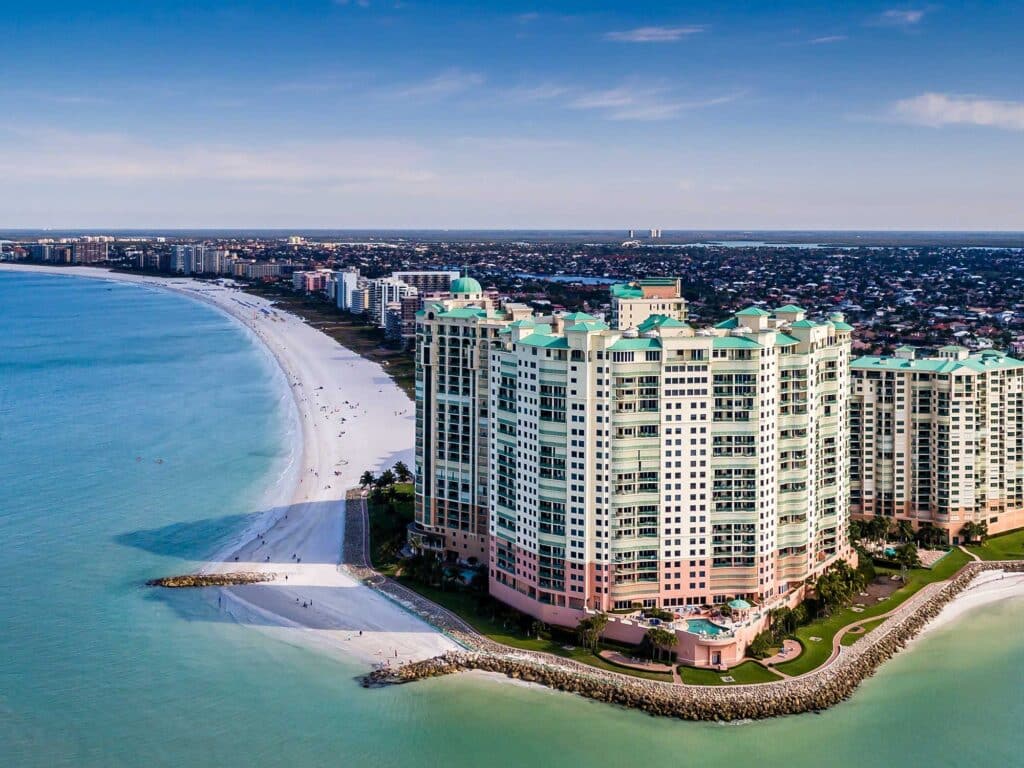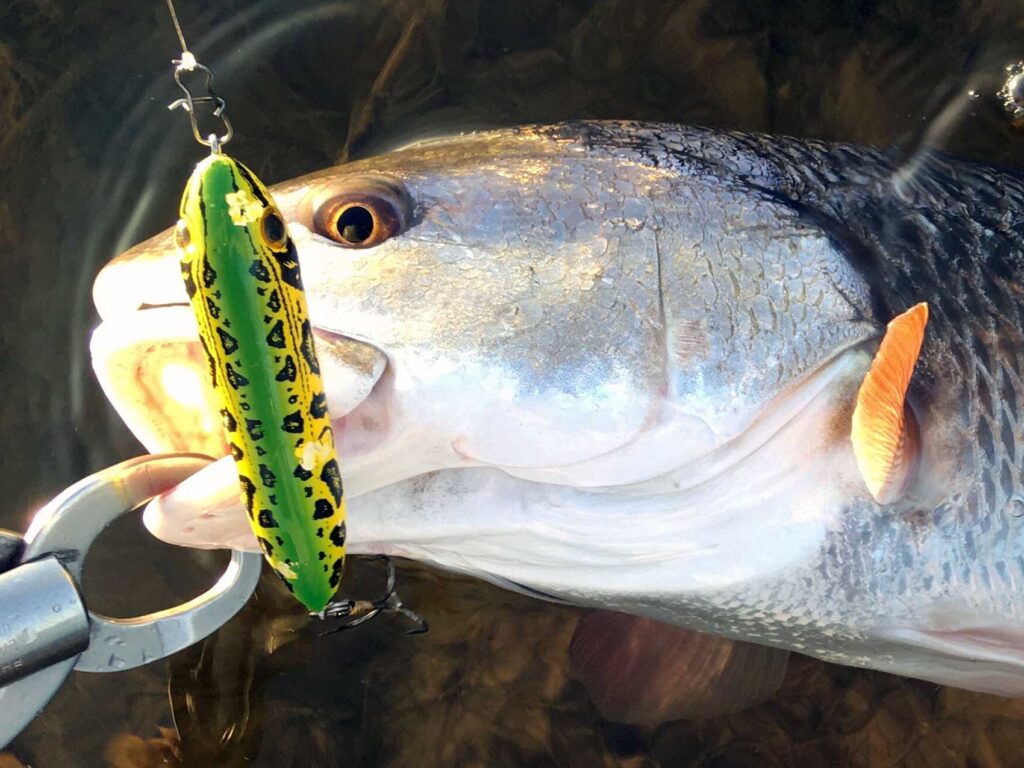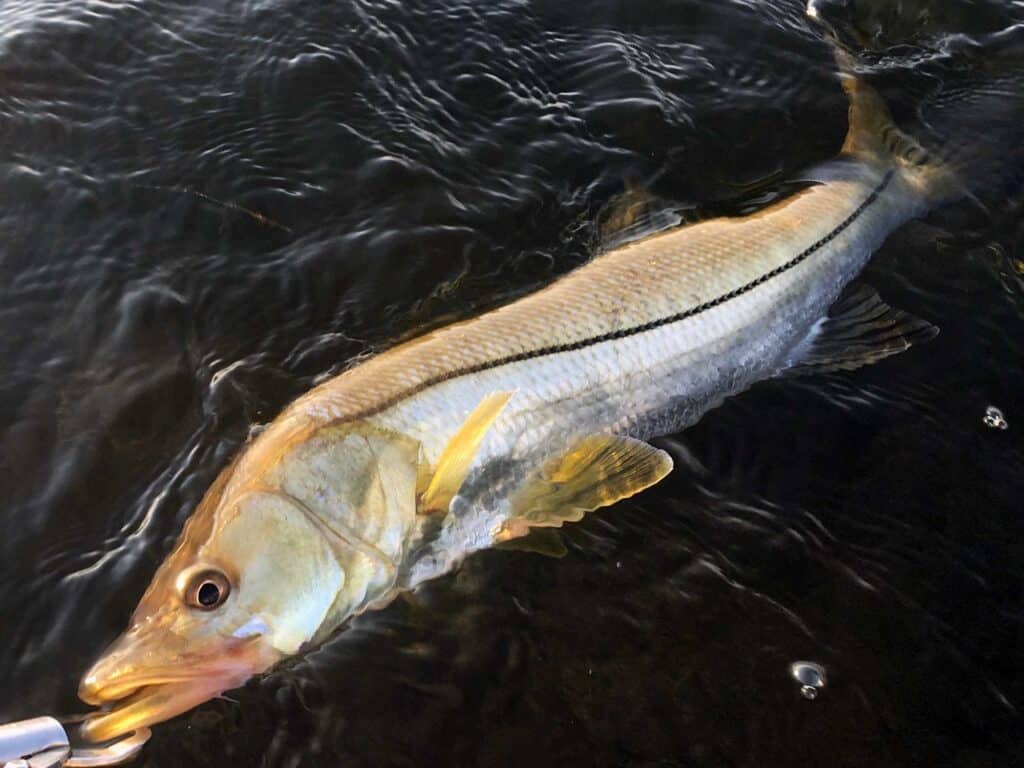
Some anglers plan their trips to Florida a year in advance, booking top-dollar charters or well-know
guides during choice tides. The preparation practically guarantees their success. Others, visiting family on a last-minute whim, toss a travel rod in with their other bags and hope for the best. That was me.
I spotted it from the balcony of my snowbird parents’ fourth-floor condo: a wadeable five-acre tidal flat — a mosaic of swaying seagrass and sandy shell bottom — bordered by a meandering channel. Somehow it had escaped the developers and subsequent draining, bulkheading, and paving that dominates so much of southwestern Florida. When I pointed the flat out to my octogenarian mom and dad, they nodded, smiled, and turned up Tony Bennett crooning to “The Good Life.”
Later that afternoon, spinning rod in hand, I walked past the pickleball courts, clubhouse, and heated pool, then made my way down a bend in a winding, manicured path of crushed shells. There, I found a gap in the mangroves that led directly into the Gulf. I hid my shoes at the edge of a close-cropped lawn and stepped in barefoot. Sand squished between toes, and warm saltwater lapped my knees.
The mangroves gave way to knee-deep flats. I began working a topwater, its rhythmic “chik-chik-chik” carrying across the water’s surface. With each cast, the gated development and assorted amenities faded behind me. The tourism board calls the region between Tarpon Springs and Naples the “Sun Coast,” claiming it gets more sunny days than any other region in the state. Apparently, the sales pitch worked.

On my Uber from the airport, an endless clutter of strip malls, chain restaurants, and traffic marched to the horizon. But look closely, and you can find vestiges of old Florida. White ibis still probe for insects, but now along the shoulders of highways. Osprey chirp over the drone of leaf blowers. Patches of mangroves — illegal to cut down in Florida — lower their spider-like roots, attempting to reclaim land.
A wake appeared behind my Spook. I tensed and kept reeling. Then: chik-chik-chik-swoosh. The lure cratered and the line came tight. A redfish slapped its tail in two feet of water, then bored away in second gear before eventually surrendering to a lip grabber. Four pounds. Solid slot fish. A quick text to my parents confirmed: “Yes, bring home for dinner!” I tethered the locked grabber to a submerged mangrove root with the redfish attached.
The late afternoon took over as more of the flat revealed itself. A frisbee-sized stingray approached my legs then bolted off with exaggerated wing flaps. Farther out, a pelican crash-landed pouch-first into the Gulf, then looked around as if hoping no one saw it. A mullet leapt up and bellyflopped just because it could.

I fished my bait with purpose and hope. With a keeper red already in the larder, anything else would be welcome but unnecessary. Something crashed the Spook, tore off 30 feet of line, then cleared the water. The hooks held, so it jumped again. Nice snook. The fish ran a second time, heading for a patch of emergent spartina grass. We both wrestled for a few moments before the fish yielded. Then it was a matter of steering it within reach, dodging the hooks, and lipping it. The linesider was not huge — maybe 26 inches — but it couldn’t have given me much more. After I eased my grip during the release, it ghosted toward a depression in the flat and vanished.
Maybe an hour of daylight remained with probably more fish around, but I knew my parents were sitting on the balcony waiting for the sun to set — and their son to return with a redfish. I waded to shore, put on my shoes, and headed back up the path. A group in Building 3 enjoying their cocktails asked from their balcony in a distinctly New York accent: “Hey! What kinda fish is that?” When I told them, they seemed astonished such a wild creature could live so close by.








